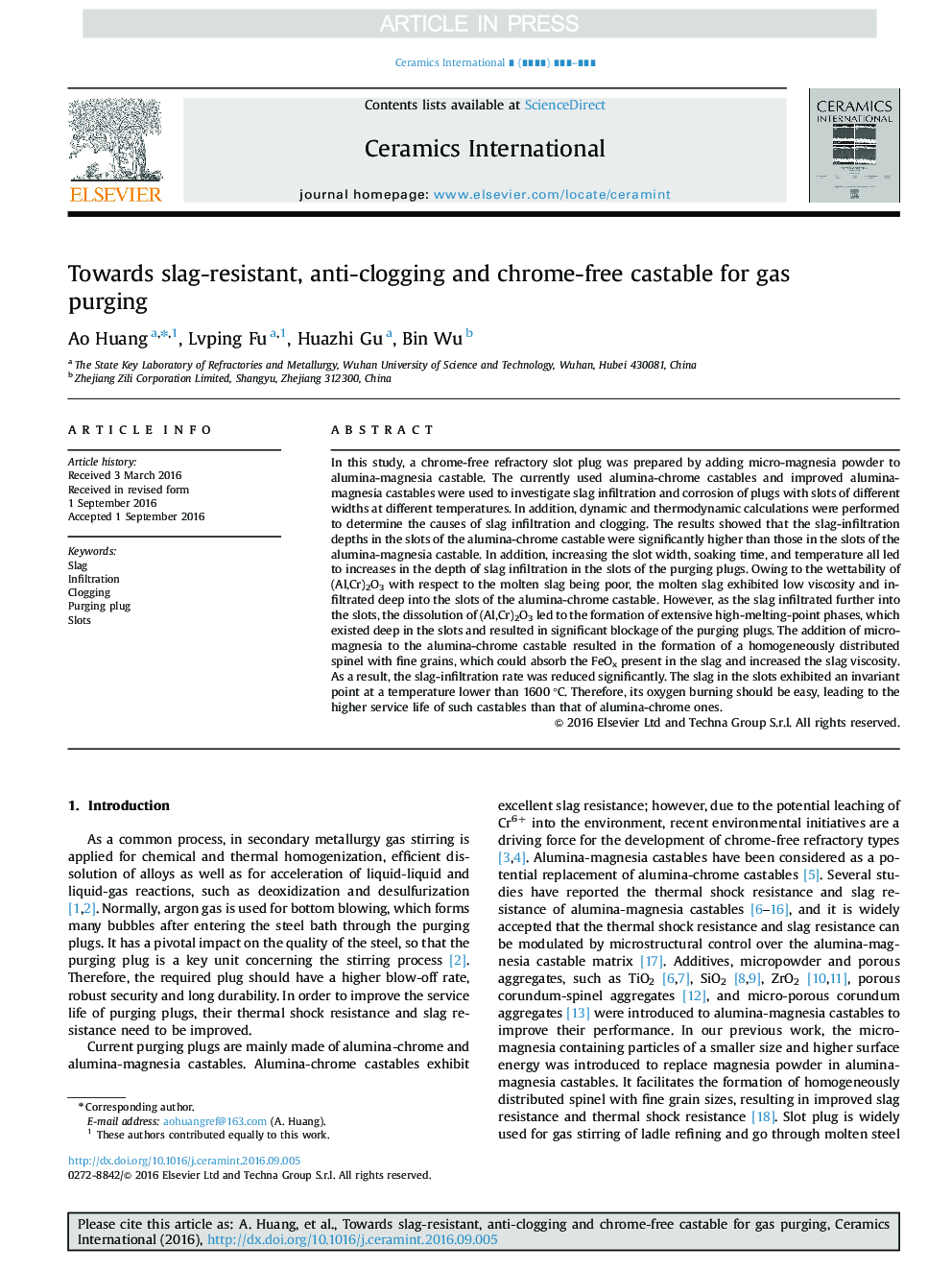| Article ID | Journal | Published Year | Pages | File Type |
|---|---|---|---|---|
| 5439348 | Ceramics International | 2016 | 7 Pages |
Abstract
In this study, a chrome-free refractory slot plug was prepared by adding micro-magnesia powder to alumina-magnesia castable. The currently used alumina-chrome castables and improved alumina-magnesia castables were used to investigate slag infiltration and corrosion of plugs with slots of different widths at different temperatures. In addition, dynamic and thermodynamic calculations were performed to determine the causes of slag infiltration and clogging. The results showed that the slag-infiltration depths in the slots of the alumina-chrome castable were significantly higher than those in the slots of the alumina-magnesia castable. In addition, increasing the slot width, soaking time, and temperature all led to increases in the depth of slag infiltration in the slots of the purging plugs. Owing to the wettability of (Al,Cr)2O3 with respect to the molten slag being poor, the molten slag exhibited low viscosity and infiltrated deep into the slots of the alumina-chrome castable. However, as the slag infiltrated further into the slots, the dissolution of (Al,Cr)2O3 led to the formation of extensive high-melting-point phases, which existed deep in the slots and resulted in significant blockage of the purging plugs. The addition of micro-magnesia to the alumina-chrome castable resulted in the formation of a homogeneously distributed spinel with fine grains, which could absorb the FeOx present in the slag and increased the slag viscosity. As a result, the slag-infiltration rate was reduced significantly. The slag in the slots exhibited an invariant point at a temperature lower than 1600 °C. Therefore, its oxygen burning should be easy, leading to the higher service life of such castables than that of alumina-chrome ones.
Keywords
Related Topics
Physical Sciences and Engineering
Materials Science
Ceramics and Composites
Authors
Ao Huang, Lvping Fu, Huazhi Gu, Bin Wu,
